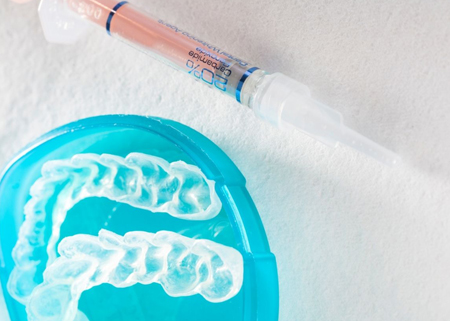
My dentist even tried to whiten the stains, but now they look darker, and my other teeth are super white. The whitening made the stains more noticeable. Now I am afraid to let her try whitening my teeth again. Can you recommend a brand that maybe my dentist doesn’t know about? Thank you. Trey from Seattle
Trey,
Thank you for your question.
We recommend that you not allow your dentist to continue whitening your teeth. It seems that she does not understand the effects of teeth whitening on brown spots.
Why Doesn’t Teeth Whitening Work for You?
If teeth whitening does not work for you, it might be because of the product you are using, the type of tooth stains or spots, or strength of the bleaching gel.
- Product type – Whitening toothpaste does not remove deeply embedded stains. And products like whitening strips, toothpaste, or baking soda will have limited results, if any.
- Bleaching gel strength – If you use bleaching gel to whiten your teeth, the contents may not be potent enough. Dentists use bleaching gel that contains carbamide peroxide. A dentist can determine the strength of the bleaching gel you need to remove embedded stains.
- Types of stains or spots – Stains that you acquire when your teeth are developing may not respond to bleaching gel. For example, tetracycline stains result from taking the antibiotic tetracycline while teeth are developing. Although tetracycline stains may respond to bleaching, porcelain veneers are more effective. Bleaching makes brown spots and fluorosis stains worse.
What Are Your Options When Teeth Whitening Does Not Work?
When teeth whitening does not work on stains or spots, an advanced cosmetic dentist can improve them with microabrasion, dental bonding, or porcelain veneers. The treatment a cosmetic dentist recommends depends on the type and severity of the stains or spots.
- Microabrasion – A dentist uses hydrochloric acid and pumice to remove white spots gently. After treatment, your tooth color will be a creamy shade.
- Dental bonding – Cosmetic dentists apply bonding directly onto your teeth. But it requires artistic ability to blend and layer bonding to mimic natural tooth color and appearance.
- Porcelain veneers – Thin shells of custom-made porcelain can conceal brown spots in teeth. And a skilled cosmetic dentist places veneers with minimal tooth preparation. For details, read our post Do Porcelain Veneers Ruin Your Teeth?
Most dentists lack the advanced training, artistic talent, and experience to conceal stains and spots that do not respond to bleaching. Schedule a consultation with an accredited cosmetic dentist.
Brian Lesage, DDS, an accredited Fellow of the American Academy of Cosmetic Dentistry, sponsors this post.



 I don’t know if I can trust my dentist anymore. Despite taking care of my teeth with twice daily brushing and daily flossing, It seems that he always finds a tooth to watch. Four years ago, my dentist said he was watching a tooth. He said that the tooth was infected at the next visit, and I needed a root canal. But the root canal didn’t save the tooth, so he extracted it and replaced it with an implant.
I don’t know if I can trust my dentist anymore. Despite taking care of my teeth with twice daily brushing and daily flossing, It seems that he always finds a tooth to watch. Four years ago, my dentist said he was watching a tooth. He said that the tooth was infected at the next visit, and I needed a root canal. But the root canal didn’t save the tooth, so he extracted it and replaced it with an implant.